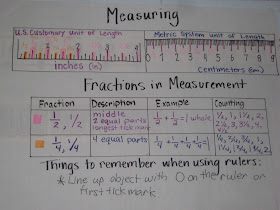Types of assessments
- At the beginning of the year, students take a district assessment on the computer. They will then take this at the middle and end of the year to track growth.
- Third graders in our building also take a GLE (Missouri's Grade Level Expectations) assessment; which they will also take at the end of every quarter.
- We give weekly pre- and post- assessments at the beginning and end of each week on the week's skill.
- On Fridays, we hold one-on-one conferences with students to remediate previously taught skills and/or the current week's skill(s).
- Throughout the week, we use exit slips, slate practice, cooperative learning, the interactive whiteboard, and self-checks.
- Students also complete self-assessments throughout math workshop. These are in the forms of consensograms (voting with stickers or dots), affinity diagrams, and paper-pencil self-assessments.
To provide students with timely and effective feedback, students are given graded assessments to record on individual proficiency graphs. They track their progress with weekly skills, so that they can look back at the graph to identify which skills need to be revisited. The graph provides a visual reminder of the goal of proficiency.
 |
| This is the individual quarterly GLE graph. Students graph the results from their quarterly GLE assessment. The star represents proficiency on 3rd grade skills (80% or above). |
Once students graph their results from weekly post-assessments, they reflect on what strategies worked to attain the skill and brainstorm ideas for improvement. These ideas are shared as a class and recorded weekly on a class bulletin board.















